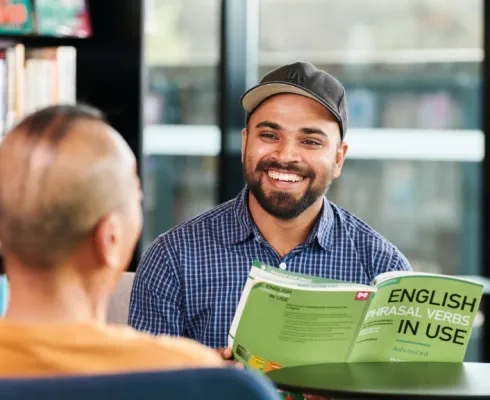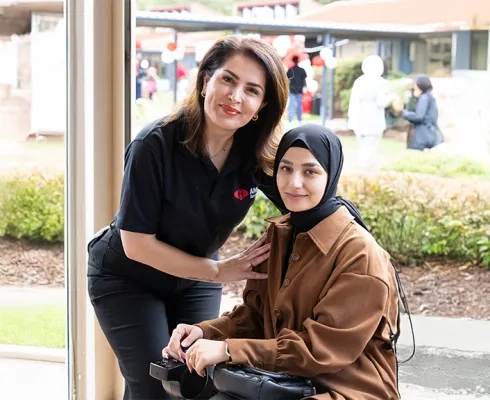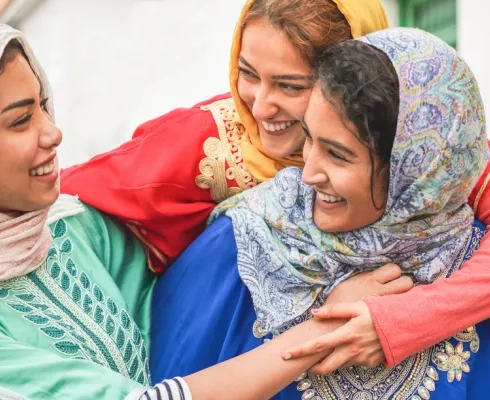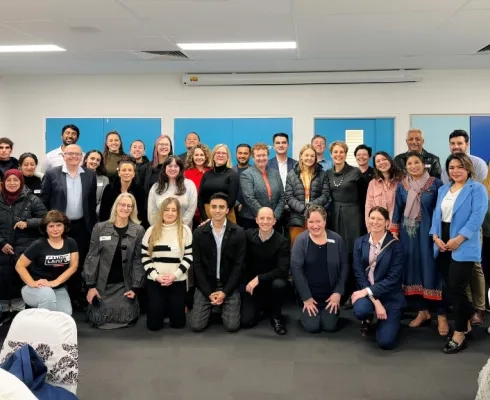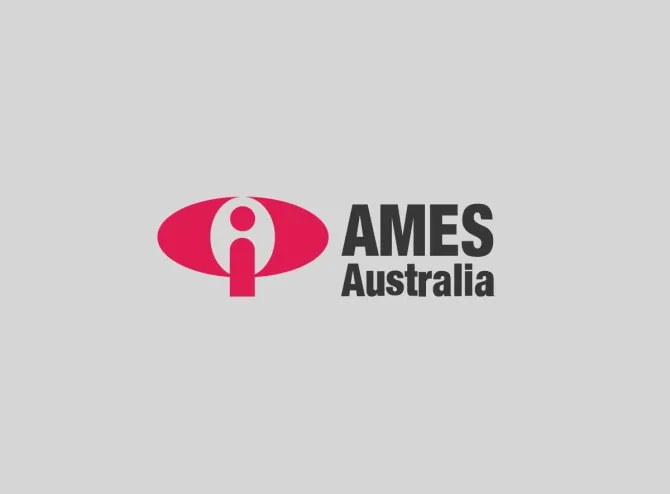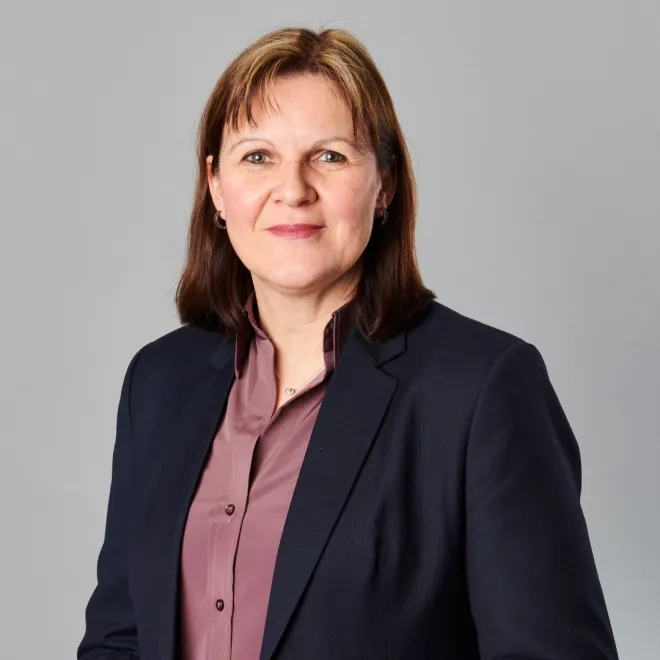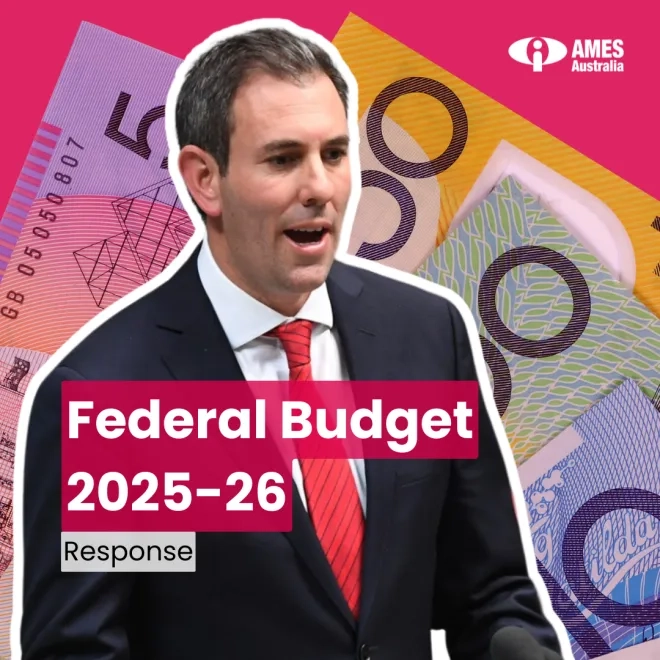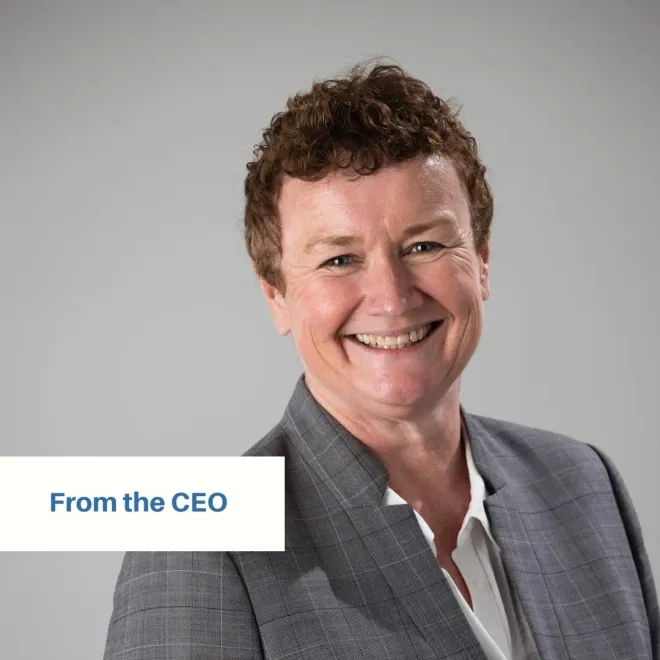
AMES and SDG 5How does the global community collaborate to make progress on some of our toughest challenges? In part, by setting shared goals and targets.
Adopted in 2015, the UN Sustainable Development Goals (SDGs) are an integrated set of 17 goals which seek to ‘Leave No One Behind’ in several categories related to poverty, hunger, discrimination against women and girls, and several others. Overall, the SDGs call for universal action to ‘end poverty, protect the planet and ensure all people enjoy peace and prosperity by 2030’, and this work requires all nations – high- and low-income alike – to take part.
This series of blog posts aims to connect AMES’ work to several of these 17 Goals, outlining how we make an impact in Australia, and thus, contribute to global progress. Gender equality aligns with AMES’ overarching mission of enabling social and economic participation of newly arrived refugee and migrants. AMES Australia works to ensure that a key vulnerable group – women – are equally able to effectively participate in society.
SDG 5 seeks to achieve gender equality and empower all women and girls. The empowerment of women and girls directly links to ensuring they are not subject to family and domestic violence. Violence does not necessarily mean physical violence, it also includes verbal, sexual, social, emotional, spiritual and financial abuse and stalking.
Women from all walks of life are subject to these maltreatments, however, women from refugee and migrant communities can be particularly vulnerable due to various additional risk factors. These include pre-arrival traumas, relatively low support for gender equality and rigid gender roles in country of origin, lack of support upon arrival, experience of racism or stereotyping after arrival, and lack of understanding of violence against women. Gender inequalities in education, employment and access to support services contribute to a culture of inequality that allowsviolence against women to continue. AMES works to ensure the safety and wellbeing of women from culturally and linguistically diverse (CALD) backgrounds, to meet policy commitments to multiculturalism, access and equity, gender equality and human rights, and to ensure that the economic and social benefits of migration for all are realised.
AMES directly contributes to the achievement of SDG 5 through our
Prevention of Violence Against Women (PVAW)program.
AMES PREVENTION OF VIOLENCE AGAINST WOMEN PROGRAM
AMES PVAW program has played an important role in preventing violence against women in many of Victoria’s CALDcommunities. The program promotes women’ssafety and wellbeing through a culturally responsive education program for women and men around gender equality and empowerment. The AMES PVAW program directly contributes to the following SDG targets:
- Target 5.1: End all forms of discrimination against all women and girls everywhere
- Target 5.2: Eliminate all forms of violence against all women and girls in the public and private spheres, including trafficking and sexual and other types of exploitation
- Target 5.5: Ensure women’s full and effective participation and equal opportunities for leadership at all levels of decision-making in political, economic and public life
Violence against Women (VAW) was formally recognised as a seriousconcern for Australia and its CALD communities in 2010 with the inception of the National Plan to Reduce Violence against Women and their Children 2010–2022.The need for a focus on CALD communities has been consistently highlighted in successiveNational Community Attitudes towards Violence Against Women Surveys(2009, 2013, 2017). Non-main English speaking respondents were more likely to excuse VAW in certain circumstances,for example if the violent person is under stress,if they believe that women who are sexually harassed should sort things out themselves, they privilege family privacy and ‘keeping the family together’ over women’s right to safety, and/or they transfer responsibility for violence from the perpetrator to the victim.
To ensure CALD communities have equal access to new evidence and knowledge stemming from National Plan initiatives,the AMES PVAW program was developed to raise awareness by:
- fostering a leadership capacity for CALD women and men to supportthe PVAW through leading actions within their own communities as well as the broader Australian community;
-
producing resources promoting PVAW, making them accessible to CALD communities nationwide;
-
strengthening the service system to respond to VAW in CALD communities;
-
integrating PVAW materials and staff education into all AMES services; and
-
evaluating processes and outcomes to develop further programs in Victoria and Australia
The program ensures that members of CALD communities are equipped to tailor the best knowledge and evidence in reducing violence against women in culturally and linguistically appropriate and meaningful ways for their own communities. The PVAW program works to advocate for gender equality and to build respectful relationships within all of Victoria’s minority cultural groups. This links to SDG Targets 5.1 and 5.2 in ending discrimination through violence. Similarly, through buildingthe capacity of the communities AMES connects with, women are empowered to actively participate socially and economically, and to step up and take control of their lives (Target 5.5).
The program has been funded by AMES Australia, CommonwealthDepartment of Social Services, the Victorian Government, OurWatch and VicHealth.
In our next post, we continue exploring ourPVAW program and its outcomes to date.
Women in CALD communities experience additional risk factors for becoming victims of family and domestic violence. Gender inequality is the key to violence against women and girls. The PVAW Program with its leadership courses successfully bring to light the importance of ending all forms of discrimination and violence against women. One of the ways SDG 5 on achieving gender equality is being accomplished by AMES Australia is through this important program.
Written by Taahira Rajudin and edited by AMES Research and Policy, and Prevention of Violence Against Women (PVAW) teams

